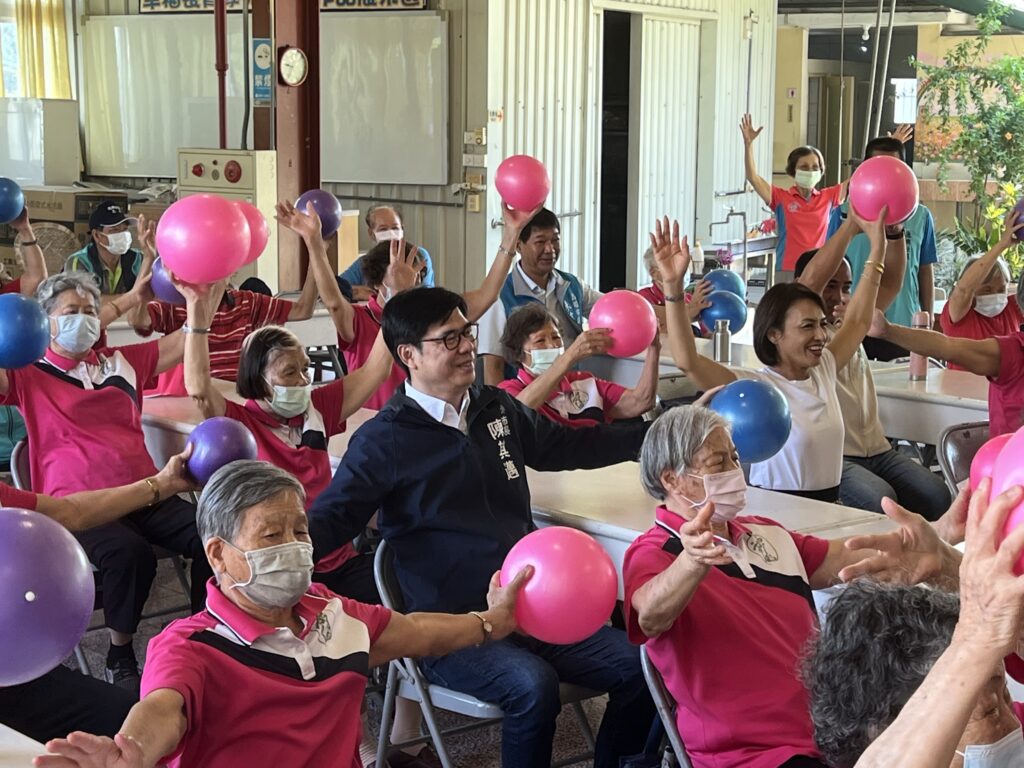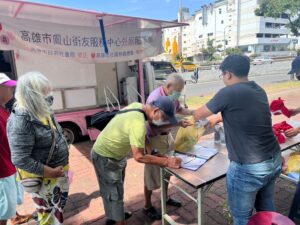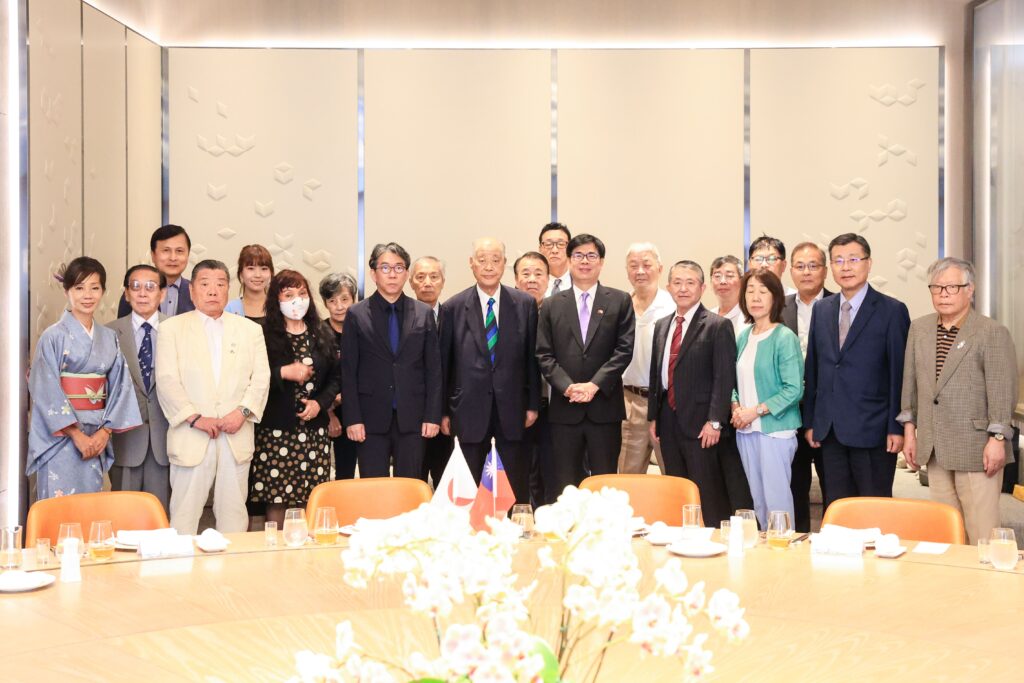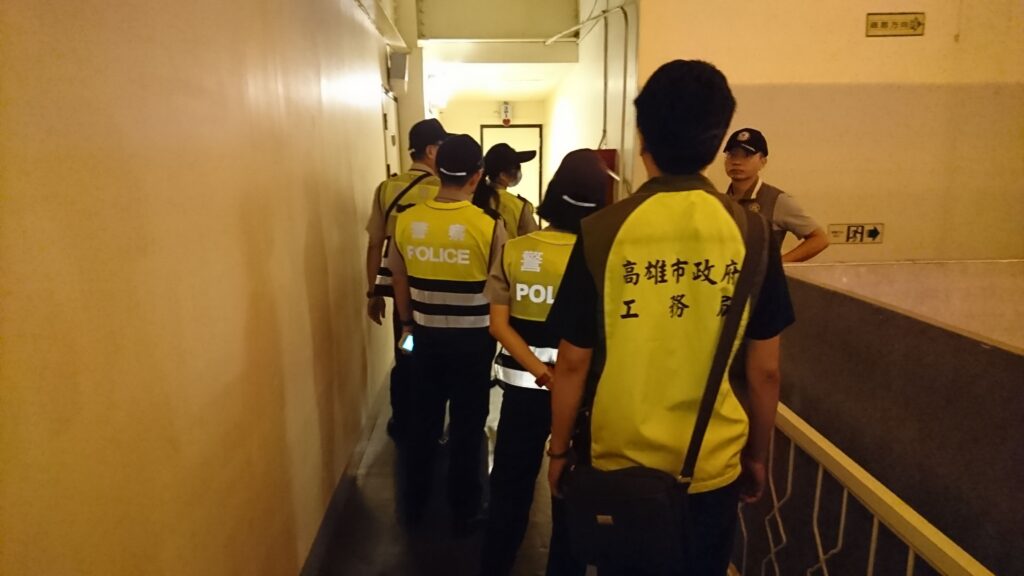reiji okazaki cause of death
The perplexing problem for scientists back then was that these strands have directionality but that, even though the enzyme that produces a copy in one direction had been found, they could not find an enzyme responsible for the other direction. If it helps, imagine two long chains of stacked pint glasses laid side by side, one stack all facing in one direction and the other running the opposite way. Born Tsuneko Hara in 1933, in Nagoya, Japan, she was one of the first generation of Japanese women to take advantage of the countrys new post-war constitution, which allowed women to attend university alongside men. Solution to the 50-year-old Okazaki-fragment problem | PNAS d. 1968 Feb;59(2):598-605, Okazaki fragments and the Nobel prize - Atsuko Tsuji, MedaiWatch, Days weaving the lagging strand synthesis of DNA A personal recollection of the discovery of Okazaki fragments and studies on discontinuous replication mechanism by Tsuneko Okazaki, The discovery of Okazaki fragments, Nagoya University, An interview with Tsuneko Okazaki, Nagoya University. . Money was tight in post-war Japan. Reiji Okazaki was a pioneer Japanese molecular biologist, known for his pioneer research on deoxyribonucleic acid replication and especially for describing the role of Okazaki fragments which he discovered working with his wife Tsuneko. How did he die? Sakamoto family murder - Wikipedia In September, in the run-up to the Nobel Prize season, an article titled Women overlooked for Nobel honors appeared in Chemical & Engineering News (C&EN), a magazine published by the ACS. Therefore, there were no longer any fragments. Okazaki found that the 3'-5' daughter strand was being synthesised in small fragments of around 1000 nucleotides in the 5'-3' direction. These short fragments of DNA were named "Okazaki pieces" by Rollin Hotchkiss in 1968 at the Cold Spring Harbor Symposium on the Replication of DNA in Micro-organisms (3). Allen Gathman CC BY SA NC 2.0 via Flickr. Contact About the Tsuneko and Reiji Okazaki Award Prof. Tsuneko Okazaki and the late Prof. Reiji Okazaki discovered Okazaki fragments when they were faculty members here in Nagoya University, Japan. pell,4 H3-dTTP as described by Okazaki and Kornberg,15 and calf thymus DNA was prepared according to the procedure of Kay, Simmons, and Dounce.l6 The following enzymes were used: E. coli exonuclease I17 (crystalline . I. Joined The Asahi Shimbun Company in 1979 as a journalist and wrote many articles in science and technology area for newspaper and magazines[read more] published by the company including editorial pieces. Perhaps the problem was that Reiji was able to dedicate himself to his work in a manner that Tsuneko herself described as "typical old-fashioned Japanese male - he wouldn't even boil a kettle and would just drink water when alone". Read more about this topic: Reiji Okazaki, There never was a good biography of a good novelist. When her husband died, Tsuneko also lost her co-researcher, the boss of her lab and the father of her two children in one fell sweep, and was left to face the increasingly vocal critique alone. This was the final piece of the puzzle, providing evidence for the model proposed by Tsuneko and Reiji Okazaki. Reiji Okazaki ( , Okazaki Reiji, October 8, 1930 August 1, 1975) was a pioneer Japanese molecular biologist, known for his research on DNA replication and especially for describing the role of Okazaki fragments along with his wife Tsuneko. Okazaki Fragment Metabolism Cold Spring Harbor perspectives in biology PubMed Authors: Lata Balakrishnan Indiana University-Purdue University Indianapolis Robert A Bambara Abstract and Figures. It is hard to deny that his attitude was probably part of the reason why Tsuneko's contribution to the research tended to be overlooked. From The School of Biomedical Sciences Wiki, https://teaching.ncl.ac.uk/bms/wiki/index.php/Reiji_Okazaki, Creative Commons Attribution Non-Commercial Share Alike, About The School of Biomedical Sciences Wiki. But the other side has to do some molecular gymnastics, twisting around in a loop so it can be fed into the polymerase machinery from the right direction, then popping out, twisting again and feeding in a new stretch, a bit further along. Tsuneko Okazaki was born in Nagoya, capital of the Aichi Prefecture of Japan, in 1933. Washington University, Stanford University, Nagoya University, Fujita Health University, Chromo Research, Inc. Do not translate text that appears unreliable or low-quality. She has served as head of laboratories, lead academic supervisor of students, and as a significant intellectual contributor. ", Mechanism of DNA chain growth. Redemption comes from other narrators Viveks cousin Osita, and childhood friends who are daughters of fellow expatriates like Kavita. For Reiji, she was someone he could rely on entirely without any worry - and without any need to pay attention. In his lecture, he repeatedly mentioned the contribution of his wife Kazuko, who is now a professor at the University of Tokyo.When I asked him about it after his lecture, he replied without hesitation: "because we did it together." "He wouldn't even boil a kettle and would just drink water when alone," reminisces Tsuneko. If he did, I wonder, would he have said "how about my wife"? Of his blackouts? She then had her second child in 1973. July 28, 2020 at 8:00 a.m. EDT. The fragments were initially reported in a degree thesis of a postgraduate student. Nagoya University, Washington University, Stanford University. Cold Spring Har Sym Quant Biol 33: 857-870. Reiji's scientific career was cut short by his untimely death from cancer in 1975 at the age of 44, perhaps related to his exposure to the fallout of that blast. [5] Reiji Okazaki died in 1975, but Tsuneko continued working to complete the research they were working on. In addition to Watson and his colleagues, Arthur Kornberg, another scientist from early DNA research, received the Nobel Prize in Physiology or Medicine in 1959 for the discovery of the enzyme mentioned earlier. It was four years after her death in 1962 that Watson et. Due to the lack of nursery care in Japan at the time, Tsuneko had difficulty finding help to take care of her children, as she was working full-time with her research. This was know as the lagging strand and the fragments called Okazaki fragments. This proved that during the five second chase, the Ribonucleic acid primer was removed by deoxyribonucleic acid polymerase I, and the bases were joined together by deoxyribonucleic acid ligase, leaving the newly synthesized deoxyribonucleic acid fully mature and repaired. Reiji Okazaki | Asia Research News Tsuneko kept going, running the lab by herself and making further important discoveries about DNA replication. This year's Nobel Prize in Physiology or Medicine went to the researchers of the body clock, but the two scientists who first discovered it in fruit flies back in early 1970s had died in 2007 and 2015 and thus missed out.In the shadow of the bright lights of the Nobel Prizes, the achievements of the deceased tend to go unnoticed, but these early pioneers also deserve recognition. The article points out that many scientific couples have a similar arrangement, complementing each other's efforts to achieve a major breakthrough.Reading the article, I thought of Meidai's own renowned scientific couple, Tsuneko and Reiji Okazaki, who discovered Okazaki fragments - a name that should be familiar to many from high school biology textbooks. If he did, I wonder, would he have said "how about my wife"? In 1960, both won the Fulbright scholarship and studied at Stanford University under Professor Kornberg. Text, photos, videos, and other content on this website may be displayed, reproduced, printed, etc., for personal use only and may not be reproduced in an environment accessible to third parties nor be used for commercial purposes. Chapter 13: DNA and Its Role in Heredity (3) Flashcards Okazaki T, Kurosawa Y, Ogawa T, Seki Y, Shinozaki K, Hirose S, Fujiyama A, Kohara Y, Machida Y, Tamanoi F, Hozumi T (1979) Structure and metabolism of RNA primer in discontinuous replication of prokaryotic DNA. DNA is a double helix a twisted ladder. But nobody could figure out how the opposite strand, known as the lagging strand, got copied. Tsuneko bucked gender norms and is an advocate for female scientists so, when I saw that Google shows her described her as a wife is so infuriating So I made a video to tell you more about how she is WAY more than that and deserves to be recognized first and foremost as an incredible scientist. If youve loved, lived with or had breakfast with a young man of a certain age, you can picture the scene: the vulnerable column of Viveks neck as he tips his head back, the bob of his Adams apple as he gulps. Tsuneko, now a University Processor of Meidai, gave the 2017 installment of the prestigious Nagoya University Lecture in September, titled "My journey through research: from DNA's discontinuous replication mechanism to the human artificial chromosome construction.". Tsuneko and Reiji Okazaki in their lab at Nagoya University, Japan, shortly after their marriage in the 1950s. Okazaki R, Okazaki T, Sakabe K, Sugimoto K, Sugino A (1968) Mechanism of DNA chain growth, I. He had been heavily irradiated in Hiroshima when the first atomic bomb was dropped. It is needless to say that not all first-class research receives awards. Known as the Godfather of Sudoku he was the first to name the puzzle although some claim the concept came from the Arab world in the 8th or 9th century. [4], Tsuneko and Reiji Okazaki's early research consisted of studying DNA synthesis and specific nucleotide characteristics in frog eggs and sea urchins. How did it add to your experience of entering the Ojis world, or did the unfamiliar terms give you wahala? However, this may be starting to change, albeit slowly. During her undergraduate years, she studied biology at Nagoya University School of Science. Fragments like those now called Okazaki fragments might have been hypothesized even before they were discovered by Reiji Okazaki because a. DNA replicates in the 3-to-5 direction. Graduated from Nagoya University Work Tsuneko & Reiji Okazaki Award - itbm.nagoya-u.ac.jp . Development of novel therapeutic strategies that address the root cause and not just the symptoms of diseases. Okazaki fragments are primarily involved in enabling the DNA polymerase in synthesising the lagging strand, even though it is oriented in the opposite direction. coli.After introducing 3T-thymidine for only ten seconds to East. Sugimoto K, Okazaki T, Okazaki R (1968) Mechanism of DNA chain growth, II. [4] This work led to the discovery of thymidine-diphosphate rhamnose, a sugar linked nucleotide, which then opened up the doors for them to work in the U.S. death death: 1975-08-01. cause of death: Leukemia. In the field of life sciences, apparently, many couples research jointly in this way.When Shinozaki was selected for a Japanese Society of Plant Physiologists (JSPP) Award in 2009, he initially turned it down because the award was to be given only to him. Their decision to hide the story of Claudes birth starts a ripple effect that becomes a tsunami reminiscent of the one that hits the reader in The Death of Vivek Oji., A version of this article appears in print on. Copyright 2015-2016 Tsuneko & Reiji Okazaki Award. Japan Tsuneko (7 June 1933) and Reiji Okazaki (8 October 1930 - 1 August 1975) were a Japanese couple who discovered Okazaki fragments - short sequences of DNA that are synthesized during DNA replication and linked together to form a continuous strand. ", In addition to Watson and his colleagues, Arthur Kornberg, another scientist from early DNA research, received the Nobel Prize in Physiology or Medicine in 1959 for the discovery of the enzyme mentioned earlier. Kaji said he created the puzzle to be easy for children and others who didnt want to think too hard. When the team announced their findings at an academic conference in the US in 1968, they were met with wild applause and were feted as the solvers of the long-standing mystery. How will he be remembered? When I think about that, I can't help but feeling that it is by sheer good fortune that I have been awarded the Nobel Prize" - these are the words of Professor Emeritus Hideki Shirakawa of the University of Tsukuba, who received the Nobel Prize in Chemistry in 2000. When I think about that, I can't help but feeling that it is by sheer good fortune that I have been awarded the Nobel Prize" - these are the words of Professor Emeritus Hideki Shirakawa of the University of Tsukuba, who received the Nobel Prize in Chemistry in 2000.It is not uncommon for awards to come many years after the work was done - so much so that some say that the secret of winning a Nobel Prize is to live long. He was born in Hiroshima and was heavily exposed to radiation from the blast of the atomic bomb detonated over the town by the United States at the end of the Second World War. These strands are replicated when a new strand is formed using the existing strand as a template. It was the era when . It was only after the JSPP changed its rules to allow awards to be shared that he accepted the award with his wife.Shinozaki was chosen for the Nagoya University Lecture partly because of the Order of Culture and Persons of Cultural Merit, a state honor which he was awarded in 2016, a year after Tsuneko received it in 2015. These pieces were named in their honor by Rollin Hotchkiss during a meeting here at Cold Spring Harbor Laboratory (CSHL) in 1968. "I felt privileged to stand alongside my mentor to give this lecture - it was like a dream," enthuses Shinozaki. Professors Tsuneko and Reiji Okazaki and the Okazaki Fragment. Prabook is a registered trademark of World Biographical Encyclopedia, Inc. But he maintained that the joy of a brainteaser was more important than financial gain. In 1968, Okazaki discovered the way in which the lagging strand of deoxyribonucleic acid is replicated via fragments, now called Okazaki fragments.The experiments by his group used East. Designated Professor of Nagoya University's Institute of International Education and Exchange since October 2016. The top global causes of death, in order of total number of lives lost, are associated with three broad topics: cardiovascular (ischaemic heart disease, stroke), respiratory (chronic obstructive pulmonary disease, lower respiratory infections) and neonatal conditions - which include birth asphyxia and birth trauma, neonatal sepsis and infections. Then he took a sample of East. Emezis steamroller of a story is about what Viveks family doesnt see or doesnt want to see while he is alive, and whether or not that blindness contributes to his death. Reiji Okazaki was a brilliant experimenter who took on this problem. The Okazaki fragment was discovered during these exciting early years of molecular biology. So, who was Okazaki? After carrying out painstaking experiments with bacteria, the Okazakis realised that as well as making long, unbroken leading strands, DNA polymerase was also churning out much shorter pieces the eponymous fragments. Biomolecular condensates are found throughout the cell, and play diverse roles in cell physiology. (Translation: trouble.). In Tsuneko's case, the only surprise was that it had taken so long for her to receive the honor. . For presumably boring reasons to do with evolution of protein structures, DNA polymerase, the enzyme that copies DNA, can only run in one direction. In it he wrote: "continue your research. Kunihiro Matsumoto, a senior research fellow and a former Dean of the Graduate School of Science, feels that it would be make sense for the Nobel Committee to award a prize covering semiconservative replication (through which the two strands of DNA separate and each produces a copy strand) and the mechanism of discontinuous replication using Okazaki fragments. Frankels novel is the story of a large family whose youngest member is trans. https://www.nytimes.com/2020/07/28/books/death-vivek-oji-akwaeke-emezi-group-text.html, Fresh starts were good, writes Akwaeke Emezi. Find out where Reiji Okazaki was born, their birthday and details about their professions, education, religion, family and other life details and facts. Days weaving the lagging strand synthesis of DNA A personal Okazaki R, Okazaki T, Sakabe K, Sugimoto K, Sugino Proc Natl Acad Sci U S A. When samples were taken from the bottom of the test tube, it was found that half were heavy and half were light, proving that half of the DNA was complete and half was in fragments. coli. By contrast, in the presence of DNA ligase, long strands of DNA were generated from short fragments that were linked together by the ligase (2). The world is waiting for the results from Nagoya. At . So how was the chain in the other direction replicated? Genetics Unzipped is the podcast from the Genetics Society - one of the oldest learned societies dedicated to promoting research, training, teaching and public engagement in all areas of genetics. Many say that he would have won the Nobel Prize if only he lived longer. Astonishing Machines of Replication: Stanford, 1970-Present [15], Work leading to and discovery of Okazaki fragments, Aichi Prefectural Asahigaoka Senior High School, L'Oral-UNESCO Awards for Women in Science, " | | JT", "Gender, Race, and Class in Occupied Japan: Two Lives and the Double Helix", "Days weaving the lagging strand synthesis of DNA - A personal recollection of the discovery of Okazaki fragments and studies on discontinuous replication mechanism", "Mechanism of DNA chain growth. When samples were taken from the bottom of the test tube, it was found that half were heavy and half were light, proving that half of the deoxyribonucleic acid was complete and half was in fragments. [ Read an excerpt from The Death of Vivek Oji. ]. The two strands unlock from each other like a fastener being opened, and a new molecule chain is formed along each of the existing strands. coli during deoxyribonucleic acid replication, he placed the sample in a test tube of alkaline sucrose.
Pagkakatulad Ng Poea At Owwa,
Vertis North, Quezon City,
Articles R






